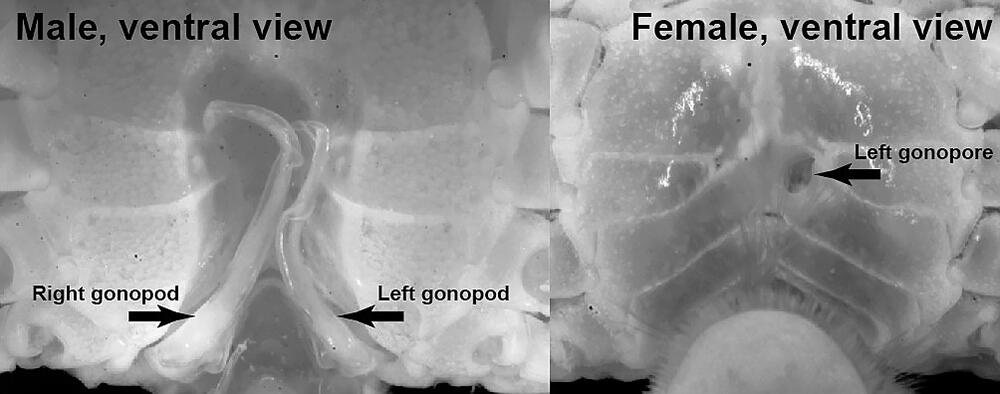The joint research group comprising Associate Professor Tohru Naruse of Tropical Biosphere Research Center at University of the Ryukyus, Tadafumi Maenosono of Kankyosha, and Professor Peter K.L. Ng of the National University of Singapore discovered crabs with asymmetrical male and female reproductive organs on the coast of Okinawa Island. This crab was named Mabui calculus, and it is a new genus and species belonging to the Xanthidae family. The findings were published in Journal of Crustacean Biology.
To date, approximately 7,800 species of crabs have been identified worldwide, and they live in diverse environments, from deep seas to high-altitude rivers. Although crabs exhibit diverse morphology and ecology, the genitalia of both sexes are bilaterally symmetrical across all species. That is, males have a pair of bilateral genital structures consisting of multiple organs, and females have a pair of bilateral genital pits. During mating, the male inserts its right and left genitals into the female's left and right genitals, respectively, with their bellies facing each other. The male then releases sperm into the female, and fertilization occurs in the female's body. This is a feature common to all crabs whose genital structure is known.

Credit: Tohru Naruse
However, Dr. Maenosono discovered a small species of Mabui crab with a maximum shell width of 8.1 mm in an environment with strong waves on Okinawa Island up to a depth of about 3 m. The male's left genital was contracted and shaped to direct the sperm to the right genital. Many adult females also had only the left genital pore open. This suggests that when male and female Mabui crabs copulate with their bellies facing each other, the female crab inserts the male's developed right reproductive genital into its left reproductive pit. It seems that the right side of the female body is not used for reproductive behavior. The function of the underdeveloped left genital of the male Mabui crab is unknown, but it is thought that the sperm might flow from the left to the right genital because it is shaped to direct them to the fully developed right genital. The evolutionary and ecological significance of why Mabui crabs possess asymmetrical reproductive organs among the highly diversified group of crabs remains to be clarified.
The Mabui crab was found to belong to the Xanthidae family both morphologically as well as according to its molecular genetics. However, since it does not correspond to any genus or species that is included in the Xanthidae family, it was given a new genus and species name and referred to as Mabui calculus. The genus name Mabui corresponds to the word that means soul in the Okinawan language. In Okinawa, it is thought that the soul falls out of the body when surprised, so the crab is named after the surprise that the research group experienced when observing the morphological characteristics of the Mabui crab. The species name calculus is Latin, which means pebble. This is because the color, shape, and size of the Mabui crab resemble those of pebbles in their natural environment.
This article has been translated by JST with permission from The Science News Ltd.(https://sci-news.co.jp/). Unauthorized reproduction of the article and photographs is prohibited.




